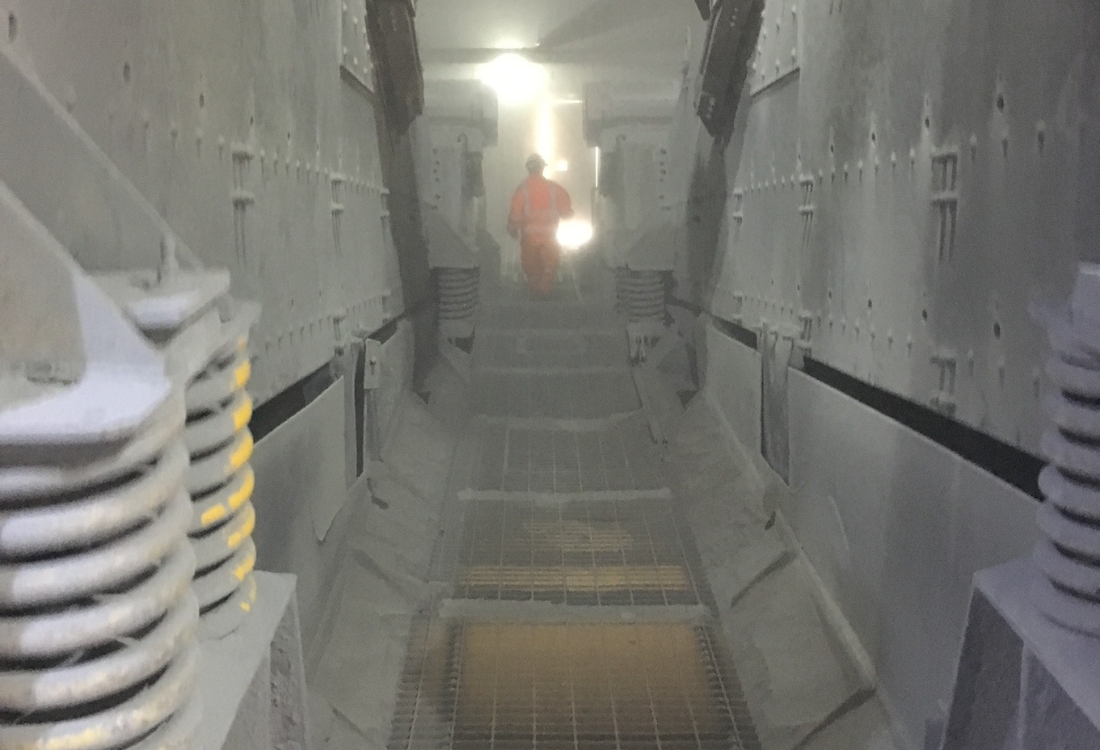
Managing The Health Risk Of Respirable Crystalline Silica In Quarries
Respirable crystalline silica, or RCS, is a significant and potentially life-threatening health hazard found in many quarries throughout the UK.
In this article we’ll look at the risk posed by RCS and how you can mitigate it through quarry dust control measures.

What Is Respirable Crystalline Silica/RCS?
RCS are tiny crystalline silica particles that are small enough to be inhaled deep into the lungs. Crystalline silica is a common mineral found in sand, stone, concrete, and mortar, and is therefore present in most quarries. Whenever these materials are cut, ground, drilled, or disturbed, they can release silica dust particles of all sizes into the air. A lot of the larger particles don’t go very far before falling to the ground or are too big to be inhaled. Many others get filtered out by the nose hairs or aren’t able to reach the lungs.
Generally, a crystalline silica particle is considered respirable if it is less than 10 µm in diameter. However, the most hazardous particles can be even smaller, around 4 µm or less. These tiny particles bypass the body’s natural respiratory defences to reach the alveoli, the deepest and most vulnerable part of the lungs.
RCS particles are often jagged and sharp, compared to larger and smoother particles, causing even more damage to lung tissue and putting workers at risk of several serious health conditions. These include lung cancer, silicosis, COPD (Chronic Obstructive Pulmonary Disease), and kidney disease.
Your Legal Responsibilities
Quarrying plants, crushers, and power tools create respirable crystalline silica particles in huge volumes, enough to pose a significant chronic health risk to quarry workers and members of the public. Under the Health and Safety at Work Act (1974) and Quarry Regulations (1999), quarry operators and managers have a legal responsibility to manage and control the safety risks their workers are exposed to. These risks include respirable crystalline silica and other airborne contaminants found in quarry dust, such as lead, arsenic and cadmium, dust from limestone or granite, and even dust created from disturbed natural asbestos deposits.
How To Control Dust On Site
Effective quarry dust control can be achieved by implementing water-based dust suppression systems at strategic areas of your site. At the rock face, loading areas, and crushers, high-pressure water systems create a fine mist of water droplets small enough to capture the smallest and most dangerous particles – those only a few microns in width. For general coverage over wider areas, low-pressure sprays prevent larger particles from becoming airborne and weigh down surface dust so it is less likely to be disturbed by boots, wheels, and wind.
An alternative to water-based systems are foam-based suppression systems. These use a water-soluble foaming agent to create a stable foam to cover and adhere to dust particles over a concentrated area, such as a rail wagon or skip. These use less water than traditional water sprays and misters, and also avoid the risk of overwetting stock materials, preserving their quality and reducing the issue of clumping.
Quarry Dust Control Solutions From Best Chem
For more information about quarry dust control and how to control dust on your site, please get in touch with Best Chem today to discuss our effective range of dust suppression solutions.